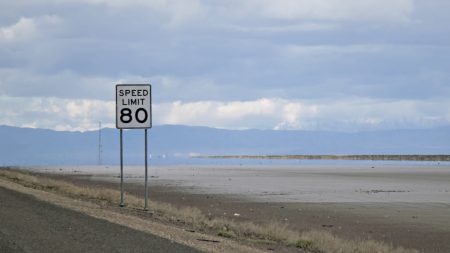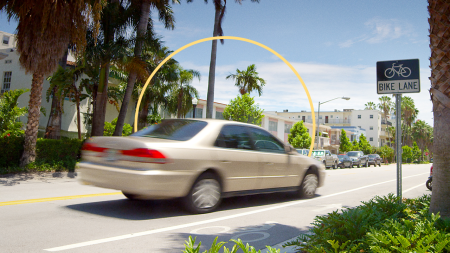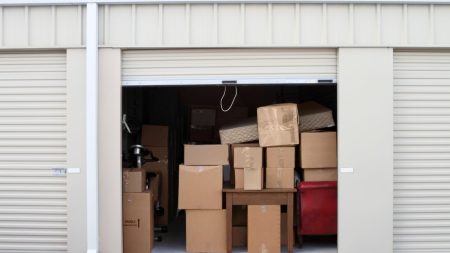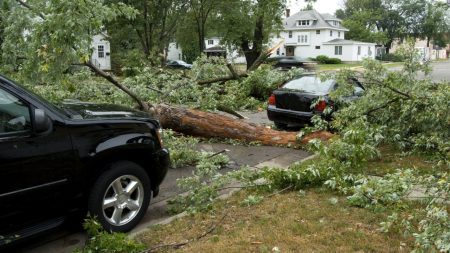After President-elect Donald Trump won his re-election bid earlier this month, Google reported an all-time record number of searches on “How to move to another country.” But despite the enthusiasm, finances will likely stand in the way. An international move can cost tens of thousands of dollars, and Bankrate’s surveys of Americans show the majority of people are priced out of that kind of move.
More than 1 in 3 (34 percent) workers live paycheck to paycheck on their current salary, meaning they have little to no money left for savings after covering their monthly expenses, according to Bankrate’s Paycheck to Paycheck Survey. Additionally, 27 percent of people have no emergency savings at all, according to Bankrate’s Emergency Savings Report.
Millennials (ages 28-43) and Gen Xers (ages 44-59) would be especially likely to struggle with an international move, as 34 percent of millennials and 31 percent of Gen Zers have no emergency savings, according to Bankrate. In comparison, 29 percent of Gen Zers (ages 18-27) and 16 percent of baby boomers (ages 60-78) say the same.
Without sufficient savings in their bank accounts, it would be hard — if not impossible — for many Americans to afford even the basic requirements of an international move. If you’re interested in moving to another country, but your savings are low, it will take a massive savings push to gather the necessary funds.
How much would it actually cost to move abroad post-election?
While a surge of people search for ways to move to another country after every election, only 9 million American citizens actually live overseas as of 2019, according to the U.S. Department of State.
If you’re interested in being one of them, it will take a lot of savings. Exactly how much you’d need to settle permanently in a new country varies greatly depending on the size of your family, which country you’d be immigrating to, what kind of visa you’d be using and many other factors. Bankrate pulled figures on the cost of a basic worker’s visa and movers for several popular English-speaking countries to give you the latest guidance on how much your move would cost.
U.S. to Canada
Approximate cost of moving to Canada: $20,200-$23,600 for two people
Despite the fact that Canada is so close to the U.S., it’s one of the most expensive countries to move to. A couple may need at least $23,208 CAD (roughly $16,600 USD as of Nov. 22, 2024) to move to Canada from the U.S., according to the Royal Bank of Canada. That includes:
The cost to hire movers from the U.S. to Canada could vary from around $3,600 USD to $7,000 USD, according to moving company International Van Lines. Moving fees from the U.S. to Canada vary greatly depending on what you’re bringing with you, where in the U.S. you’re moving from and if you’re hiring movers.
U.S. to United Kingdom
Approximate cost of moving to the U.K.: $20,200-$23,600 for two people
A family of two would need to pay roughly £373 to £1,867 (roughly $470 USD to $2,340 USD as of Nov. 22, 2024) for a work visa, depending on the exact type of visa, your job and the length of time you’ll be in the U.K., according to official U.K. guidelines. The visa also covers dependents.
Moving fees from the U.S. to the U.K. also vary heavily on how much you take with you, but sending furniture and personal belongings across the Atlantic generally costs around $2,000 USD to $9,500 USD, according to International Van Lines.
U.S. to Australia
Approximate cost of moving to Australia: $15,150 for two people
A skilled work regional visa costs $4,770 AUD (roughly $3,100 USD as of Nov. 22, 2024) for the first applicant and an additional $2,385 AUD (roughly $1,550 USD as of Nov. 22, 2024) for every additional applicant over the age of 18, according to official Australian guidelines. Applicants might also be required to undergo a health exam, take an English language test or undergo an Australian police records check, all of which require additional fees.
Shipping your belongings to Australia can cost around $10,500 USD, according to International Van Lines.
U.S. to New Zealand
Approximate cost of moving to New Zealand: $9,020-$19,520 for two people
New Zealand’s work-to-residence visa will cost each applicant a non-refundable $6,450 NZD (roughly $3,760 USD as of Nov. 22, 2024), according to official New Zealand guidelines. You must also already have a full-time job offer (or currently be working) for an accredited employer.
The cost of moving your belongings to New Zealand from the U.S. can be roughly between $1,500 USD and $12,000 USD, according to International Van Lines.
Want to move abroad? Start saving now
Moving to a new country may be expensive and feel out of reach, but it is possible if you strategically plan ahead. Here are some tips on how to think about the financial requirements.
Know how much you’ll need
Calculating the cost of moving is often tricky, but it’s essential for a major international move. Aside from the price of a visa and movers, there will be other costs you’ll need to consider, such as first month’s rent or mortgage for your new home; setting up utilities, a phone plan and a bank account; the flight and other expenses.
Keep in mind, if you’re a U.S. citizen, you’ll still need to pay U.S. taxes when you’re living abroad, on top of taxes in your new country. Taxes in other English-speaking countries tend to be higher than those in the U.S., too.
In addition, you should ideally have several months’ worth of expenses in savings in an emergency savings account to prepare for any unexpected costs.
Once you have a final savings amount you need, divide it by the number of months until your planned moving date, so you know how much to save each month. This will also give you a concrete figure to save towards, instead of the vague goal of “saving more.”
See where you can downsize
If you plan on moving abroad, one of the most significant ways to minimize expenses is by pairing down what you need to move. Moving a home full of stuff can be quite costly, so consider pairing down your belongings to only what you can carry in a few suitcases. That includes clothes, essential electronics (such as a laptop) and sentimental items.
Boost your savings
A high-yield savings account earns you more interest on your savings than your typical savings account. Shop around for the best interest rates to find the best bank for you, then watch your money grow without even thinking about it. It can provide a much-needed push to help you meet your savings goal.
Alternatively, if you have savings now that you want to put aside for a move in the future, consider a certificate of deposit (CD). Like high-yield savings accounts, CDs earn higher interest, but the money can’t be accessed for a set period. Their guaranteed rate of return makes them a great option if you don’t need to touch the money for a while.
If you need even more help beefing up your savings, consider minimizing expenses before your big move. Plan no-spend days, cancel unnecessary subscriptions and memberships and pay down your debt so you don’t carry it with you after your move.
Read the full article here
















